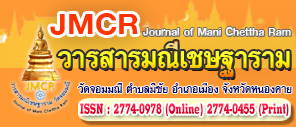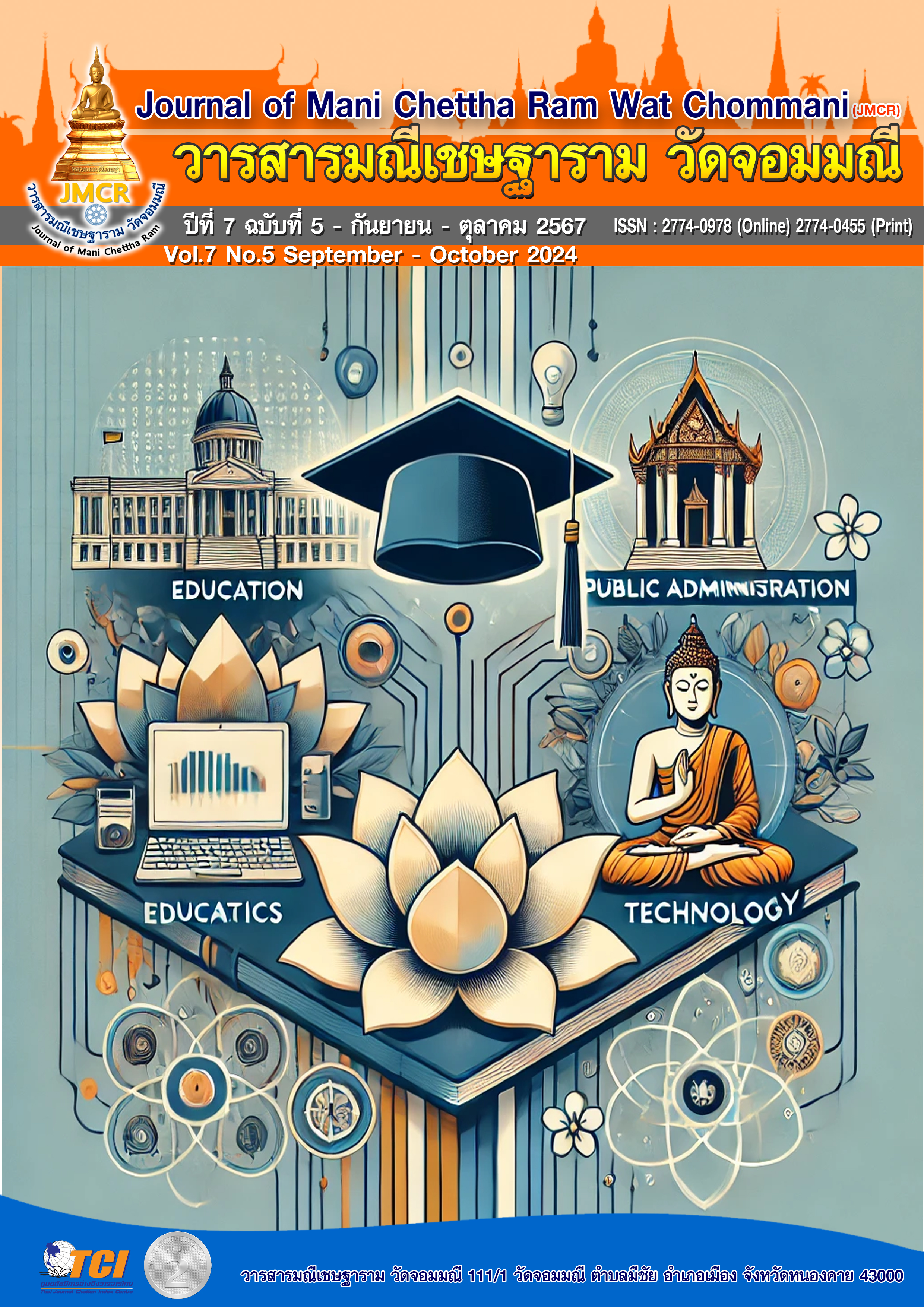การพัฒนาผลสัมฤทธิ์ทางการเรียนโดยใช้บทเรียนคอมพิวเตอร์ช่วยสอน เรื่อง เทคโนโลยี (การออกแบบและเทคโนโลยี) สำหรับนักเรียนชั้นมัธยมศึกษาปีที่ 1
Keywords:
Learning Achievement, computer assisted instruction in the topic of technology (desing and technology) Subject, SatisfactionAbstract
The objectives of this research were: (1) to study achievement by using computer assisted instruction in the topic of technology (desing and technology) subject for Mathayomsuksa 1 to meet 80 percent criteria; (2) to compare student achievement, between before study and after study by using computer teaching assistant in design and technology subject for Mathayomsuksa 1 and (3) to estimate the student’s satisfaction with the study by using computer teaching assistant in design and technology subject for Mathayomsuksa 1. This research was quasi-experiment research.The sample consisted of 20 students Mathayomsuksa 1 derivable from cluster random Sampling. The instruments used in the research were: (1) learning activities by using computer teaching assistant (2) learning achievement test by using computer teaching assistant (3) satisfaction questionnaire for Mathayomsuksa 1 in Anubankrasang school. The statistics used in the data analysis were percentage, arithmetic mean, Standard Deviation, and T-test dependent.
The results of the research were that:
- study by using using computer assisted instruction in the topic of technology (desing and technology) subject for Mathayomsuksa 1 student’s in Anubankrasang school generated percentage amounts to 88.86 higher than specified threshold 80 percent;
- study achievement by using computer teaching assistant in design and technology subject for Mathayomsuksa 1 student’s in Anubankrasang school higher than pre-study statistics at the level .05.;
- Mathayomsuksa 1 student’s at Anubankrasang school were satisfied with the study achievement by using computer teaching assistant in design and technology subject. Overall, it's at the highest level.
References
ใจทิพย์ ณ สงขลา. (2561). การออกแบบการเรียนอย่างดิจิทัล Digital learning design. (พิมพ์ครั้งที่ 1). กรุงเทพมหานคร: โรงพิมพ์แห่งจุฬาลงกรณ์มหาวิทยาลัย.
ไชยยศ เรืองสุวรรณ. (2533). เทคโนโลยีการศึกษา : ทฤษฎีและการวิจัย. กรุงเทพมหานคร: โอเดียนสโตร.
ธนารักษ์ สารเถื่อนแก้ว, สุพจน์ อิงอาจ และศยามน อินสะอาด. (2563). การพัฒนาบทเรียนคอมพิวเตอร์บนระบบเครือข่ายอินเทอร์เน็ต ร่วมกับรูปแบบการเรียนการสอนแบบ 5E ในราย วิชาวิทยาศาสตร์ (วิทยาการคำนวณ) สำหรับนักเรียนชั้นประถมศึกษาปีที่ 3. ใน วิทยานิพนธ์ ศึกษาศาสตร์มหาบัณฑิต เทคโนโลยีการศึกษา. คณะศึกษาศาสตร์ มหาวิทยาลัยรามคำแหง.
นภาพร บุญศรี. (2565) การพัฒนารูปแบบการเรียนการสอนออนไลน์ โดยใช้การจัดการเรียนรู้แบบร่วมมือร่วมกับวิธีการสอนตามรูปแบบ ARCS เพื่อส่งเสริมแรงจูงใจใฝ่สัมฤทธิ์ สำหรับนักศึกษาระดับอุดมศึกษา. กรุงเทพมหานคร. มหาวิทยาลัยศิลปากร.
นิตยา มั่นศักดิ์. (2560). การพัฒนาบทเรียนบนเครือข่ายอินเทอร์เน็ต เรื่อง การสร้างและตกแต่งงานคอมพิวเตอร์กราฟิกด้วยโปรแกรมกราฟิก สำหรับนักเรียนชั้นประถมศึกษาปีที่ 6. คณะศึกษาศาสตร์มหาวิทยาลัยนเรศวร.
บุญชม ศรีสะอาด. (2553).การวิจัยเบื้องต้น. (พิมพ์ครั้งที่ 8). กรุงเทพมหานคร: สุวีริยาสาส์น.
พวงรัตน์ ทวีรัตน์. (2543). การสร้างและพัฒนาแบบทดสอบผลสัมฤทธิ์. กรุงเทพมหานคร: สำนักทดสอบทางการศึกษาและจิตวิทยา มหาวิทยาลัยศรีนครินทรวิโรฒ ประสานมิตร.
พิสิฐ รักษ์กระโทก และทนงศักดิ์ โสวจัสสตากุล. (2563). การพัฒนาบทเรียนบนเครือข่ายอินเทอร์เน็ต โดยใช้การเรียนรู้แบบสืบเสาะ เรื่อง การจัดการสารสนเทศ ชั้นมัธยมศึกษาปีที่ 1. กรุงเทพมหานคร. สถาบันเทคโนโลยีพระจอมเกล้าเจ้าคุณทหารลาดกระบัง.
วงศ์พันธ์ อมรินทร์เทวา. (2564). เพราะการศึกษาหยุดไม่ได้ ต่างประเทศเรียนกันอย่างไรในช่วงโควิด. เรียกใช้เมื่อ 25 พฤษภาคม 2566 แหล่งที่มาhttps://www.the101.world/educationabroad-covid/
วัชรพล วิบูลยศริน. (2557). หลักการออกแบบการสอนบนเว็บตาทมแบบจำลอง ADDIE เพื่อการสอนสนทนา ภาษาไทยเบื้องต้นสำหรับชาวต่างประเทศ. วารสารศรีนครินทรวิโรฒ วิจัยและพัฒนา (สาขามนุษย์และสังคมศาสตร์), 6(12), 197-198.
สมนึก ภัททิยธนี. (2562). การวัดผลทางการศึกษา. (พิมพ์ครั้งที่ 12). กาฬสินธุ์: ประสานการพิมพ์.



